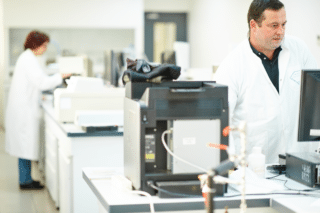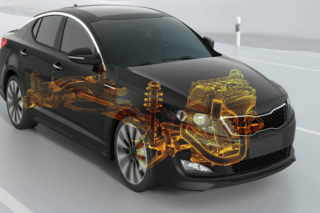Today self-driving cars are rapidly clocking up road kilometres across the world. Yet a growing sense of the remaining hurdles that need to be overcome by driverless tech developers – coupled with a series of fatal accidents involving self-driving cars – has eroded confidence and exposed the bold claims of some companies as ungrounded hype.
Autonomous car technology is already being developed by the likes of Nissan, Byton, Mercedes and, of course, Tesla. More than 50% of US cities are currently preparing their streets for self-driving vehicles. The burgeoning number of experimental driverless cars on our roads has, unsurprisingly, given the impression that the arrival of safe and reliable fully autonomous vehicles is just around the corner.
Complex Challenges

Self-driving vehicles already have a far better safety record than their human-driven counterparts. Their performance is largely the product of machine learning algorithms that have been fed terabytes of data about street architecture, the laws of the road and dynamic driving conditions. Yet the biggest challenges – anticipating human behaviour and dealing with nuanced driving scenarios – still present major obstacles, says Paul Newman, professor of robotics at the University of Oxford and founder of Oxbotica, a UK-based company that builds driverless cars.
What’s hard is all the problems with driving that have nothing to do with driving. Many potential scenarios that a driverless vehicle could find itself having to handle simply aren’t covered by the laws of the road.
Jack Stilgoe is a sociologist at the University College London and studies the social impact of technology. For him,
People are mischievous. They don’t behave rationally or logically, which makes predictive modelling hugely difficult.
Degrees of Autonomy
The self-driving vehicle sphere is dominated by six so-called levels of autonomy. These range from none at all at Level 0, through to complete autonomy (equal to that of a human driver) at Level 5. Most automakers are currently focusing their efforts on Level 4, where genuine autonomous driving systems kick in. A Level 4 vehicle is capable of completing an entire journey without driver intervention, but will probably still feature a steering wheel and pedals for situations where the human passenger may have to take control.
Both Ford and Volvo have recently stated they will offer Level 4 cars by 2021.

Volvo is making use of the DRIVE platform from American tech company NVIDIA, which the latter is marketing as the world’s first artificial intelligence (AI) platform spanning the entire range of autonomous driving. NVIDIA has claimed that its software is capable of tracking a driver’s head and eye movements, and is even smart enough to read a driver’s lips. Danny Shapiro, NVIDIA’s Senior Director of Automotive explains:
NVIDIA is working on end-to-end autonomous driving solutions from Level 2+ through to Level 5 robotaxis. Because NVIDIA DRIVE is an open, scalable platform, we can address the entire spectrum of automated and autonomous driving.
The AI Imperative
So how far away are we from a Level 5 vehicle? According to various experts, it could be anywhere from a long time to never. John Krafcik, CEO of driverless vehicle firm Waymo, believes it will take decades for cars with advanced levels of self-driving capability to become common on roads, and that self-driving cars will always require some form of “user interaction”.
Kafcik’s argument is backed up by AI supremo Luc Julia, co-creator of Apple’s virtual assistant Siri. Julia claims fully autonomous cars will never exist because the cognitive burden of management is far too important to be entrusted to a machine.
SEE ALSO. Luc Julia’s interview on French national radio France Info last January
If the eventual existence of fully autonomous cars is up for debate, there is a growing consensus among AI experts that it may be years, if not decades, before self-driving systems can be completely relied on to avoid accidents. For Oxbotica’s Newman,
I don’t believe there’s any level of intelligence that we won’t be able to get a machine to do. The only question is when.










